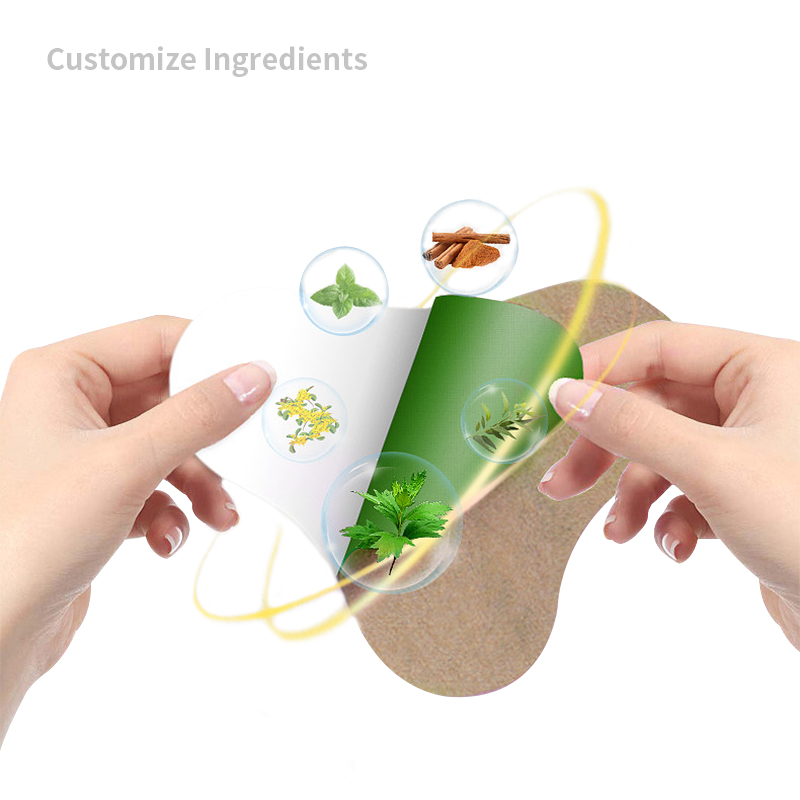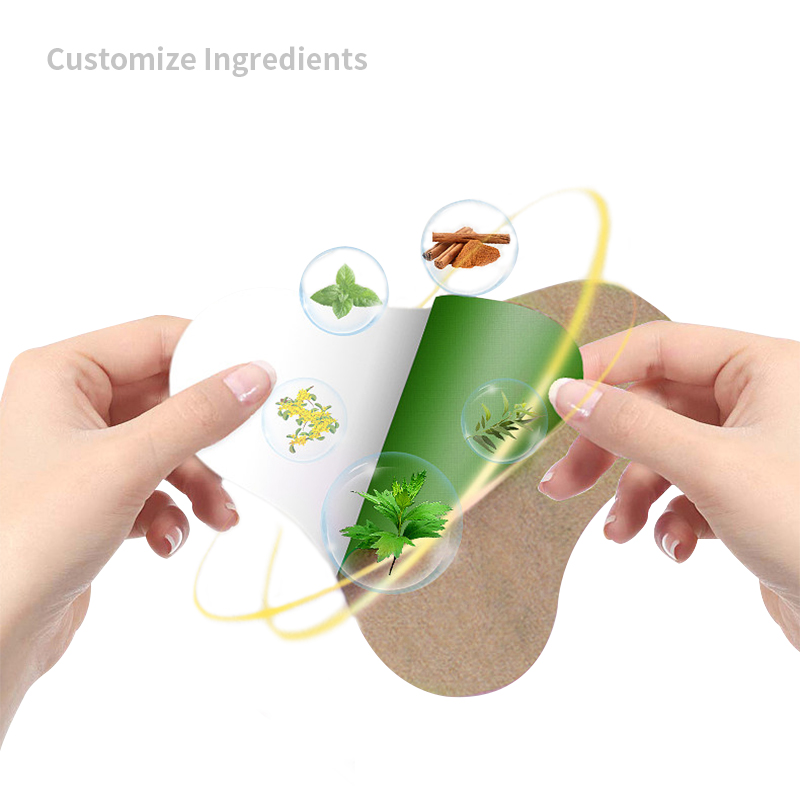Can an OEM Help with the Design and Development of New Cervical Vertebra Pain Relief Patches?
The development of new cervical vertebra pain relief patches involves numerous challenges, from initial design to final production. Collaborating with an Original Equipment Manufacturer (OEM) can significantly streamline this process, offering specialized expertise and resources. This article delves into how an OEM can assist in the design and development of cervical vertebra pain relief patches, highlighting the benefits, processes, and considerations involved.

Understanding the Role of an OEM in Medical Device Development
What is an OEM?
An Original Equipment Manufacturer (OEM) is a company that produces components or products that are purchased by another company and retailed under the purchasing company's brand name. In the context of cervical vertebra pain relief patches, an OEM can provide comprehensive services, including design, development, manufacturing, and sometimes even regulatory support.
Why Partner with an OEM?
Partnering with an OEM offers several advantages for manufacturers, suppliers, and private label brands:
- Expertise: OEMs often have specialized knowledge in the development of medical devices.
- Efficiency: Leveraging the OEM’s existing infrastructure and processes can accelerate product development.
- Cost-Effectiveness: OEMs can reduce costs through economies of scale and streamlined processes.
- Regulatory Compliance: Experienced OEMs are familiar with regulatory requirements, ensuring compliance and reducing the risk of delays.
How OEMs Assist in the Design and Development of Cervical Vertebra Pain Relief Patches
1. Initial Concept and Design
OEMs can help transform an idea into a tangible design. This phase involves:
- Market Research: Understanding the needs and preferences of the target market.
- Feasibility Studies: Assessing the technical and economic viability of the concept.
- Design Prototyping: Creating initial prototypes to visualize the product and make necessary adjustments.
2. Material Selection and Testing
Choosing the right materials is crucial for the efficacy and safety of cervical vertebra pain relief patches. OEMs assist in:
- Material Research: Identifying materials that offer optimal adhesion, drug delivery, and patient comfort.
- Testing and Validation: Conducting tests to ensure materials meet safety and performance standards.
3. Formulation Development
For medicated patches, formulation development is a critical step. OEMs can:
- Develop Drug Formulations: Creating formulations that ensure effective transdermal delivery of pain relief medications.
- Stability Testing: Ensuring the formulation remains stable and effective over the product’s shelf life.
4. Regulatory Support and Documentation
Navigating regulatory requirements can be complex. OEMs provide support in:
- Regulatory Strategy: Developing a plan to meet regulatory requirements in target markets.
- Documentation: Preparing necessary documentation for regulatory submissions, including technical files and clinical data.
- Compliance Testing: Conducting tests to ensure the product meets regulatory standards.
5. Manufacturing and Scale-Up
Once the design and formulation are finalized, OEMs can move into manufacturing:
- Pilot Production: Producing small batches to refine manufacturing processes and address any issues.
- Full-Scale Production: Scaling up production to meet market demand.
- Quality Control: Implementing stringent quality control measures to ensure consistency and safety.
6. Post-Market Support
After the product is launched, OEMs continue to provide support through:
- Post-Market Surveillance: Monitoring product performance and safety in the market.
- Ongoing Improvements: Making adjustments and improvements based on feedback and new research.
Benefits of Using an OEM for Custom and Private Label Cervical Vertebra Pain Relief Patches
1. Customization
OEMs can tailor products to meet specific needs, offering custom cervical vertebra pain relief patches that align with brand requirements and market demands.
2. Branding and Private Labeling
For companies looking to expand their product lines, OEMs offer private label services, allowing brands to market cervical vertebra pain relief patches under their own name.
3. Speed to Market
Leveraging the OEM’s expertise and resources can significantly reduce time to market, providing a competitive edge.
4. Cost Savings
By outsourcing design and development to an OEM, companies can reduce capital expenditure and operational costs.
Considerations When Choosing an OEM for Cervical Vertebra Pain Relief Patches
1. Expertise and Experience
Evaluate the OEM’s experience in developing similar products and their knowledge of regulatory requirements.
2. Quality Standards
Ensure the OEM adheres to stringent quality standards, such as ISO 13485, to guarantee product safety and efficacy.
3. Communication and Collaboration
Effective communication is vital for a successful partnership. Choose an OEM that values collaboration and maintains transparency throughout the process.
4. Capacity and Capabilities
Assess the OEM’s manufacturing capabilities and capacity to ensure they can meet your production demands.
5. Cost and Value
Consider the overall value offered by the OEM, including cost-effectiveness, quality, and support services.
Conclusion
Partnering with an OEM can significantly enhance the design and development process of cervical vertebra pain relief patches. From initial concept to post-market support, OEMs provide valuable expertise, resources, and efficiency. By carefully selecting an experienced and reliable OEM, manufacturers, suppliers, and private label brands can ensure the successful development and launch of high-quality cervical vertebra pain relief patches.
Frequently Asked Questions (FAQs)
1. What are the benefits of partnering with an OEM for cervical vertebra pain relief patches?
Partnering with an OEM offers expertise, efficiency, cost savings, and regulatory support, ensuring a streamlined development process.
2. Can OEMs help with regulatory compliance for cervical vertebra pain relief patches?
Yes, experienced OEMs can provide regulatory support, including strategy development, documentation, and compliance testing.
3. What is the role of an OEM in custom cervical vertebra pain relief patches?
OEMs can tailor products to meet specific needs, offering customized designs, formulations, and branding options.
4. How do OEMs ensure the quality of cervical vertebra pain relief patches?
OEMs implement stringent quality control measures, adhering to standards such as ISO 13485, to ensure product safety and consistency.
5. What should I consider when choosing an OEM for cervical vertebra pain relief patches?
Consider the OEM’s expertise, quality standards, communication practices, manufacturing capabilities, and overall value.
6. Can OEMs assist with post-market surveillance of cervical vertebra pain relief patches?
Yes, OEMs can provide post-market support, including monitoring product performance and making necessary improvements based on feedback and research.
By understanding the role of an OEM and the benefits they offer, companies can make informed decisions, leading to the successful development and market launch of cervical vertebra pain relief patches.






